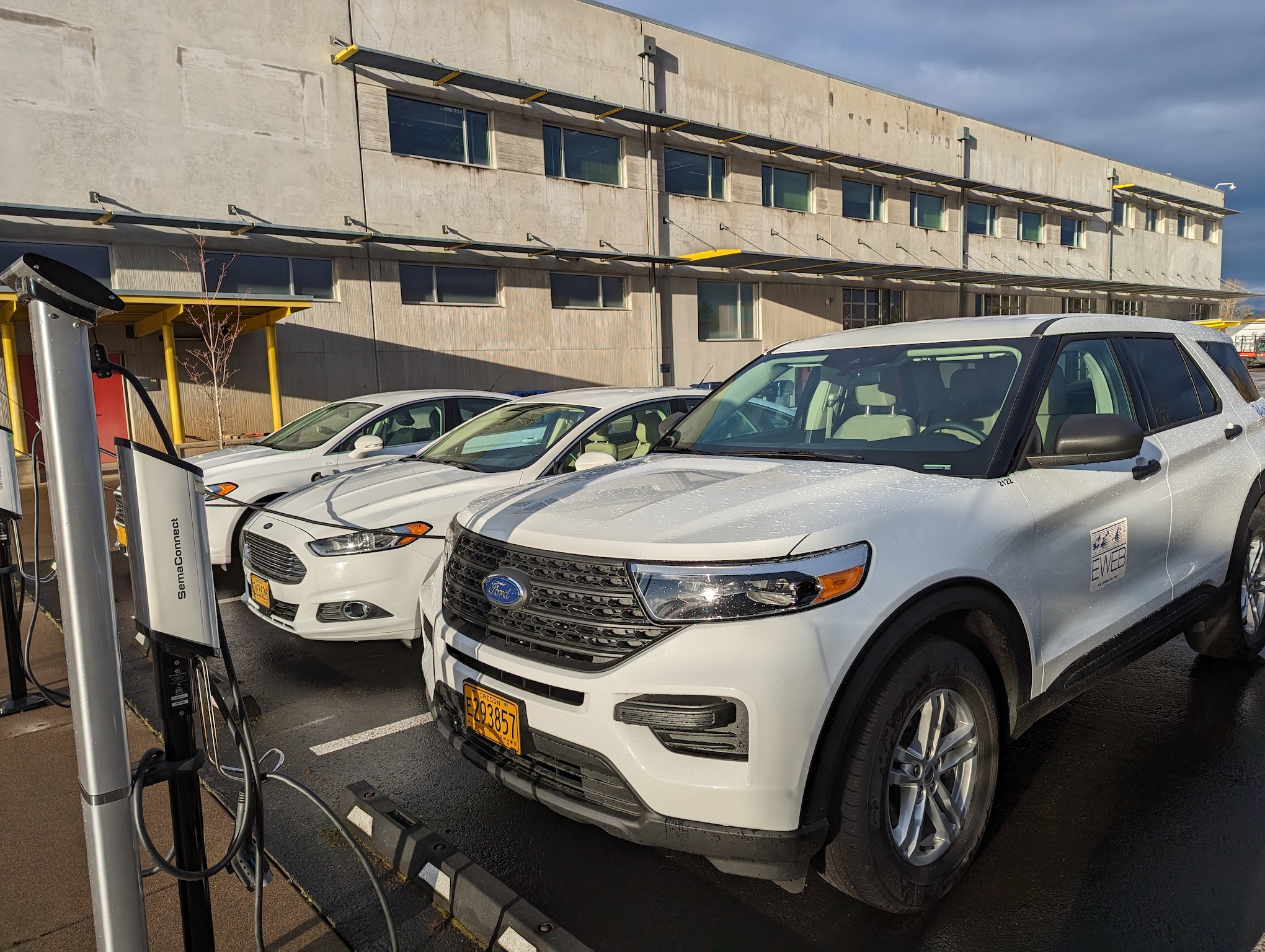Related News
Related News
-
Energy shortfall of 9 gigawatts projected for the Northwest
By 2030, a dry year combined with soaring energy demand during extended cold snaps could lead to rolling blackouts, a new study warns.
Find Out More -
Sustainability Snapshot - Celebrating Energy Efficiency Projects in the Community
Sustainability Snapshops highlight impactful projects completed by EWEB's Customer Solutions department, as a way to celebrate the meaningful work happening behind the scenes.
Find Out More -
EWEB Sets 2026 Budget and Rates, Advances Evaluation of McKenzie Valley Service Territory Realignment
Taken together, the 2026 budget and rate adjustments and the territory-realignment evaluation reflect EWEB’s dedication to responsible financial stewardship, modern, resilient utility infrastructure, and thoughtful planning for the future.
Find Out More -
EWEB secures $2.5 billion of reliable, affordable, carbon-free energy for customers
The new contract with EWEB’s largest energy supplier, the Bonneville Power Administration, forms the foundation of a diverse energy portfolio.
Find Out More -
Women in STEM: Meet the Hydro Project Engineer Building Habitat for Salmon
EWEB Engineer Associate Val Chang found her way to the McKenzie River from Los Angeles, inspired by heritage trips to the waters of Taiwan and key mentors along the way.
Find Out More -
Public Power Week Poster Contest Winners 2025
The results are in! View the winning posters from EWEB's 2025 Public Power Week Poster Contest.
Find Out More -
EWEB Hometown Heroes compete internationally
Out of 290 teams from 14 different countries, EWEB's Lineman Rodeo team places in the top third of competitors.
Find Out More -
Let's Talk Turkey. Is your family ready for winter?
We're heading into the holidays, but that also means snow, ice, and not-so-nice weather might be in the forecast. Here are some tips to prepare in advance.
Find Out More -
Vote for your favorite Public Power Week Posters
The top five submittals will receive awards. Help us pick the winners.
Find Out More -
Electric Projects underway in North & South Eugene
Underground lines and disaster-resilient power poles are part of EWEB’s infrastructure upgrade near Eugene’s largest natural resource area.
Find Out More -
The Bonneville Power Administration Rate Change and Your EWEB Bill
BPA’s finalized rate increase is smaller than projected, and EWEB’s pass-through adjustment effective October 1, 2025 will now be 2.7% for residential customers—down from the anticipated 4%.
Find Out More -
Join the Pledge to Prepare
When you think about getting ready for an emergency, you probably have questions. You aren't alone. Preparing for emergencies can be overwhelming, which is why EWEB has put together a 12-month program to help you and your family get two weeks ready.
Find Out More -
You can’t predict the next disaster, but you can prepare
The earthquake lasted less than a minute. But now the power’s out. The tap runs dry. Cell service is spotty. Would you be ready?
Find Out More -
EWEB completes helicopter installation of salmon habitat features
EWEB adds downed trees and 2,000 tons of gravel to the Uupper McKenzie River below Tamolitch Falls to improve spawning habitat.
Find Out More -
Court rules in favor of EWEB in Carmen-Smith litigation
The U.S. District Court in Eugene has granted EWEB's motion to dismiss a lawsuit brought under the Endangered Species Act pertaining to fish passage at EWEB’s Trail Bridge Dam. The favorable ruling clears the way for EWEB to continue advancing towards implementation of permanent fish passage at the dam.
Find Out More - Show More
EWEB preparing for expected surge in electric vehicles
June 24, 2024 • Aaron Orlowski, EWEB Communications

Electric vehicle (EV) sales are poised to skyrocket in the years ahead as technology improves, more models hit the market, prices fall and regulations limit the sale of gas-powered vehicles.
EWEB is preparing for this surge.
More EVs will result in more demand for EWEB’s electricity and, potentially, more strain on EWEB’s electric distribution grid. EWEB is preparing by forecasting future electricity demand 20 years into the future and identifying possible mixes of energy resources that can meet that demand. And, EWEB’s engineers are assessing the distribution system to make sure it’s up to the task.
“We know a wave of EV’s is coming, and we’re getting ready for it so that we can continue serving safe, reliable, affordable and environmentally responsible energy to our customers 24 hours a day, 365 days a year,” said EWEB Assistant General Manager Rod Price.
To meet carbon reduction goals, Oregon, the U.S., and the world need to transition from single-occupant gas-powered cars to less polluting transportation options – including electric vehicles, electric public transit, electric bikes and scooters, and non-motorized transportation, such as walking and biking.
This is crucial because transportation is the largest source of emissions in Eugene, in Oregon and the U.S. In Eugene, transportation accounts for 54% of carbon emissions. EWEB’s customers can greatly lower transportation emissions by switching to electric transportation, since EWEB’s electricity is approximately 90% carbon-free, with a goal of 95% carbon-free electricity by 2030.
“Electrifying transportation is one of the most important ways we can decarbonize our society,” said EWEB Climate Policy Analyst Kelly Hoell. “As a society, our decarbonization strategy should be to make our electricity as carbon-free as possible, then pursue all the electrification options that make sense to run on that green electricity, while actively managing our peak demand. One of our roles at EWEB is to ensure our electricity continues to stay both low-carbon and affordable, to encourage people to continue to electrify so they can reduce their emissions.”
EV sales are forecasted to remain robust in the years ahead.
Globally, nearly 14 million electric vehicles were sold in 2023, or 18% of new vehicle sales, according to the 2024 Global EV Outlook report published by the International Energy Agency. The agency forecasts that in 2024 sales will jump to 17 million, accounting for more than one in five cars sold worldwide. China dominates the global market, making up 60% of global EV sales, with Europe and the United States as the second and third largest markets.
Supply chain issues and requirements in the Inflation Reduction Act that critical parts of EV production – such as lithium mining and lithium-ion battery manufacturing – occur domestically could restrain EV sales. But car makers and battery manufacturers seem ready to make sure supply chains are robust. From 2022 to 2023, major EV and battery manufacturers announced $500 billion of investments in the EV supply chain, of which around 40% has been committed, according to the IAE report.
The pace of EV adoption in the U.S. is rising, according to IEA data. In 2011, EVs made up a minuscule fraction of car sales in the U.S. – just 0.2%. But by 2023, EVs made up 10% of new car sales in the U.S. Various projections (including EWEB’s own electrification study) suggest that EV sales could make up anywhere between 40% and 50% of new car sales in the U.S. by 2030, and up to 80% by 2035.
California led the nation in 2023 in the share of new vehicles sold that are electric. Next were the District of Columbia and Washington State, followed by Oregon in fourth place. As of February 2024, there were more than 89,000 light-duty electric vehicles on the road in Oregon, according to the Oregon Department of Energy.
EWEB estimates that there are now over 4,700 electric vehicles registered in the utility’s service territory and the numbers are growing rapidly. In fact, EWEB’s Electrification Study estimates that by 2040, 85% to 95% of all vehicles on the road could be electric.
Since EWEB’s electricity is already approximately 90% carbon-free, EV adoption could cut Eugene's total carbon emissions by almost 40% by 2040, according to the study, especially if EWEB can continue to manage the timing of peak demand from electric vehicles and encourage most charging to happen at night when electricity GHG emissions are low.
“The Electrification Study was a key benchmark for us as we sought to figure out how much electrification will impact our power purchasing decisions in the next 20 years,” said Ben Ulrich, EWEB’s lead author on the study. “Aside from potential industrial electrification, which we weren’t able to study, we found that vehicle electrification is poised to be the biggest cause behind future increases in demand for EWEB’s electricity.”
Incentives, lower operating costs and regulations will contribute to more EV adoption.
Adoption of EVs will only accelerate in the years ahead as incentives make it cheaper to purchase them and regulations make it harder to buy gas-powered alternatives. Prospective buyers of electric vehicles can reduce the purchase cost with raft of incentives.
Locally, EWEB offers customers a $500 rebate for a home charging station. At the state level, Oregonians were able to get a rebate of up to $7,500 from the Oregon (DEQ) Department of Environmental Quality for a new EV, depending on their income. Intense interest in the program outstripped available funds, forcing DEQ to temporarily suspend the program in 2023. This year, DEQ allowed Oregonians who purchased EVs between April 3 and June 3 to apply for the rebate. The federal government, however, still offers a tax credit worth up to $7,500 for a new EV or $4,000 for a used EV due to passage of the Inflation Reduction Act. The incentive for used EVs is the first ever.
Meanwhile, regulations are bearing down. Last year, Oregon regulators approved rules requiring that starting in 2035 all new vehicles sold in Oregon must be zero-emission, a category dominated by EVs. The rule, Advanced Clean Cars II, was established by the Oregon Department of Environmental Quality and mirrors a rule approved by the California Air Resources Board.
Part of the surge in demand is being driven by the rising number of models on the market. In years past, EVs were limited to sedans and hatchbacks, excluding the 78% of new car sales in the U.S. that are for trucks and SUVs. Now, with electric models of those vehicle types coming out, EV sales are set to surge.
EVs are also becoming more popular as the total cost of owning one – including purchase price, maintenance costs and fuel costs – drops. Some analysis suggests the total cost of owning an EV is already lower than a gas-powered car, while other analysis suggests it will reach that point in the next few years. Lower maintenance costs are a major part of the appeal: over the life of the vehicle, an EV will incur about $8,000 less in maintenance than a gas-powered vehicle, according to one analysis.
“Even as we celebrate the trend towards electric transportation, we need to take into account social equity considerations,” said Juan Serpa Muñoz, who manages EWEB’s electric mobility program. “Many people can’t afford to buy an EV, even with incentives. At EWEB, we are prioritizing social equity by also offering rebates for e-bikes, launching EV car sharing sites, and offering competitive community grants for organizations that are bringing electric mobility to broader populations.”
Locally, public transportation provider, Lane Transit District (LTD) transitioned 30% of its bus fleet to electric buses, and another 59% to diesel hybrid buses, bringing electric mobility and sustainability to area transit users as well.
EV-driven demand is likely to prompt EWEB to pursue new electricity sources.
Customers charging their EVs will cause demand for electricity to rise.
EWEB predicts that all these EVs will prompt electricity demand to rise by about 2% per year starting around 2030. To meet that rising demand, EWEB is exploring new electricity generation sources, such as wind, solar, hydropower and biomass. In 2023, EWEB published analysis that indicated that if higher electricity demand is contained to just charging customers’ EVs, then EWEB can meet that demand largely with a combination of new wind farms and new utility-scale batteries over the next 20 years.
However, it’s likely that electric vehicle charging will be just one cause of rising electricity demand. Though the natural gas ban was removed from the ballot last year, conversations about removing gas from new residential construction continues. Changes to other energy sources would likely cause demand for electricity to rise during peak times – especially on cold winter days when electric heaters are running full-force. And EWEB is likely to face requirements designed to prevent regionwide electricity blackouts that will compel the utility to procure energy resources that can generate electricity on demand, such as biomass and small modular nuclear reactors (SMR).
“In our Integrated Resource Planning process, we’re seeing that we need to be looking hard at energy resources that are carbon-free, can store energy for long periods of time and that we can dispatch on demand to meet our customers’ needs,” said Brian Booth, EWEB’s chief energy resource officer. “Those kinds of resources will be important for our portfolio so that we can both maintain reliable electricity delivery and meet our climate goal of having a 95% carbon-free portfolio by 2030.”
Technologies that adjust how and when EWEB customers charge their EVs could help keep electricity demand in check, especially during moments of peak demand, saving the utility money and reducing costs and even carbon emissions.
If EV owners plug in their vehicles after work, they will increase peak demand in the evening hours between 5 and 9 p.m. – when demand is already high. That peak electricity likely requires new and expensive investments in the transmission and distribution systems, is more expensive for EWEB to procure, and is associated with higher carbon emissions, since fossil-fueled generation is dispatched around the region to meet needs during those peak hours.
But if EWEB can persuade EV owners to charge their vehicles at other times, such as overnight, peak demand won’t be as high and EWEB won’t have to make such costly investments. EWEB forecasts that customer programs aimed at managing EV charging – such as time-of-use rates – could reduce the peak demand caused by EV charging by 40%.
Managed EV charging will help reduce strain on the grid.
When EV owners plug in their cars, they’re increasing the demand on EWEB’s local electric distribution system, with more electricity flowing through the lines to their homes.
“We are definitely seeing an increase in demand from customers for EV expansion, even though this work is not yet dominating our queue of projects we need to work on,” said Tyler Nice, EWEB electric operations manager. “But EV owners can do a lot to reduce strain on the grid by managing when they charge their EVs. If we can charge EVs at night between 10 p.m. and 6 a.m., the grid will be less stressed and we won’t have to make as many expensive upgrades.”
The need for upgrades will rise gradually, and EWEB is assessing and preparing for it. Upgrades will be focused on specific geographic areas where demand is rising or is likely to rise. Regulations and equity considerations may also prompt upgrades. Initially, EWEB will need to upgrade equipment closest to the customer, such as taps at individual houses or transformers that serve clusters of houses. Later on, feeders that serve multiple transformers or substations that serve whole neighborhoods may need upgrading.
Smart meters that allows EWEB to understand how electricity demand fluctuates in real time and in specific areas will help EWEB develop programs that can mitigate peaks in demand – allowing EWEB to avoid costly infrastructure upgrades.
“Customers can help us plan equipment upgrades and reduce overall costs by proactively reaching out to us before you install an EV charger or other piece of equipment that could cause a big increase in demand,” Nice added. “Working together, we can create a plan that meets your needs while we pursue a resilient future together.”
What you can do to save energy:
A cleaner energy future requires modernizing our power grid and water network.
By understanding the differences between your options, you'll be able to make a confident, informed decision that aligns with your values, budget and needs.
As a public utility, we share our customers' values around environmental stewardship.





